The first leg of our our 23-day camping trip was a 7-day circuit through Southern Namibia. After meeting our guides and the rest of our group in Windhoek, we set off into the Kalahari Desert.
Since we had arrived in Namibia via overnight bus, this was the first chance we had to see the Namibian countryside. During our brief stops at the sign demarcating the Tropic of Capricorn and for lunch, we admired the wide-open spaces and the desert life.
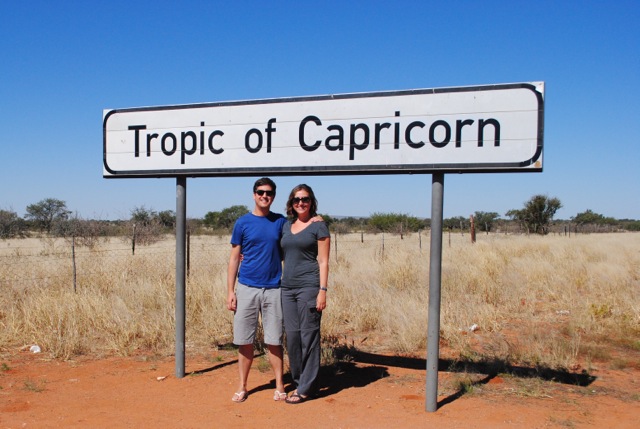
We arrived at our first destination, Lapa Lange Lodge, near Mariental, in the late afternoon. As soon as we laid eyes on the place, we wondered exactly what kind of camping trip we had signed up for. The lodge was definitely not the rustic, remote location we had envisioned: it boasted a lush sodded lawn in the middle of the Kalahari Desert, a private deck surrounded by a small moat filled with koi fish and frequented by pristine white ducks, and a dining room draped with hanging icicle lights. Our campsite was located so close to the lodge that we could get the lodge’s wifi in our tent.
Upon arrival, we were herded into an open safari vehicle and taken on a “game drive.” As we climbed into the truck, we noticed of bloody hunk of something beneath the seats. The remains of the last tour group? It turned out to be part of a springbok carcass, which would be fed to some cats.
Our first stop on the game drive was a large pen enclosing a pair of caracals. Our driver grabbed some of the springbok carcass and headed into the pen. Again, we exchanged looks. “Game drives” where captive carnivores were hand-fed wasn’t what we had in mind when we signed up for the tour. (It was, however, interesting to get to see the caracals so close.) Our driver explained that the caracals were kept in the pen because otherwise local farmers, who viewed them as threats to their livestock, would shoot them.
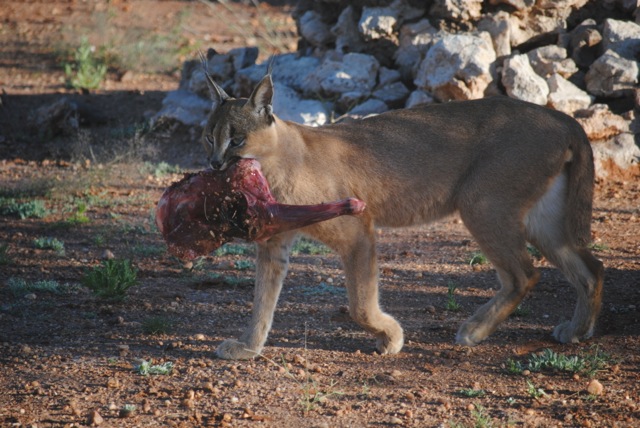
After the caracals, we stopped at a larger pen where our guide threw another portion of the springbok carcass to a cheetah. The driver informed us that, like the caracals, the cheetah was kept in an enclosure for its own safety. He told us that the cheetah had been purchased from a local farmer who had found the animal amongst his livestock and had been intending to kill it before the lodge stepped in and arranged its purchase and relocation.
Once we had finished with the carnivores, we drove onto the reserve surrounding the lodge. The reserve was home to many breeding herds of animals, and we saw wildebeests, elands, ostriches, blesbok (a rare white antelope), and the top of a giraffe’s head over some trees. Our game drive also included a surprise sundowner in the reserve, featuring Windhoek lagers and a rather diverse snack tray offering carrots, dried fruit, and generic Cheetos.
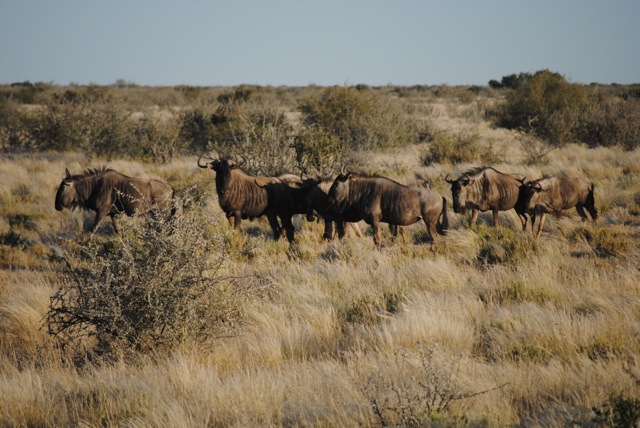
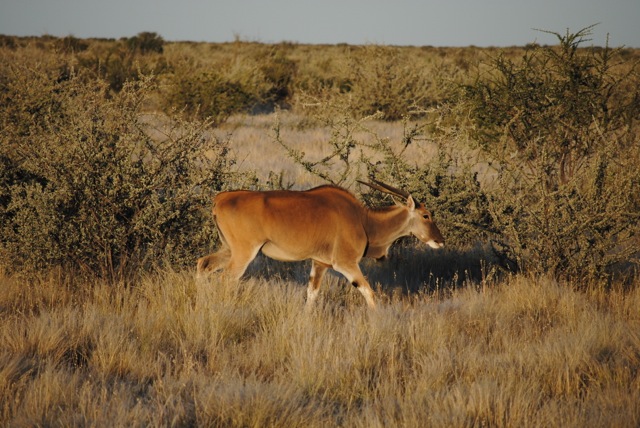
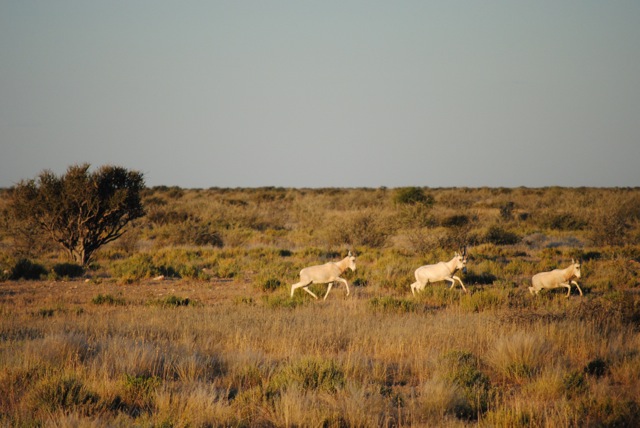
After we had returned from our game drive and had our dinner around the campfire, some of us ventured over to watering hole located on the lodge’s property. When we visited, the watering hole was busy with springbok.
Where We Stayed:
☆ Lapa Lange Lodge Campsite. Three goats. We couldn’t decide whether to add or subtract a goat for the wifi in the tent, so we just called it a wash.

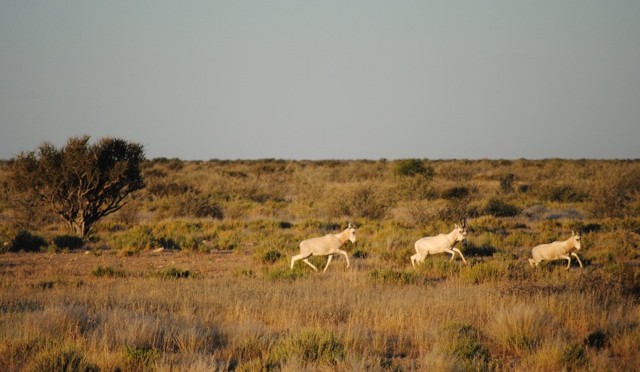

Carrots and Cheetos? What a nice snack. Ha.